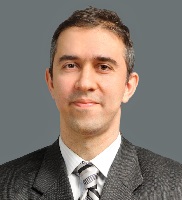Any successful fraudster can tell you the golden rule of his trade: if no one notices your fraud, keep doing it. The possibility to repeat past success makes fraud very costly: for example, health care fraud accounts for one to three percent of the US federal budget.[i] If a medical provider discovers a loophole in the screening technology by cheating the system successfully, he can file multiple bogus claims to swindle Medicare. An audit initiated at the request of the Senate Finance Committee in 2012 highlights the repeated nature of tax fraud by citing many incidents where a fraudster used either a single bank account or a single physical address to file hundreds of tax returns. In one case, the IRS allowed 2,137 returns filed from the same address in Lansing, Michigan.[ii]
Individuals have an additional incentive to commit fraud today if they will face the same audit technology again tomorrow. By cheating successfully today they discover how to cheat the system. The possibility of interaction tomorrow makes their discovery valuable. Learning opportunities may have played an important role even in the recent financial crisis. In his book The Big Short, Michael Lewis describes how investment bankers learned to manipulate the perceived quality of mortgage portfolios after discovering loopholes in the models rating agencies used to rate them.
An effective way to prevent repeated fraud is to change the audit technology each time an individual interacts with it. Switching audit technologies reduces the fraudster’s incentive to cheat by eliminating the value of his discovery. In my recent article Deterring Fraud by Looking Away, I show that switching the audit technology—sometimes even to a weaker technology—helps eliminate fraud. In the extreme, the auditor can reduce fraud by looking away (i.e., refusing to audit) even if the audit costs nothing.
Changing the audit methodology decreases the would-be fraudster’s incentive to cheat by increasing his costs. Suppose that the individual has already made an investment to improve his ability to defeat a given auditor. When the auditor switches his technology, the fraudster has to make the investment once again. Ultimately, switching decreases the fraudster’s gains. Another merit of switching is that it enables the auditor to eliminate fraud by setting a lower penalty. That is, switching is a substitute for a more severe punishment. This feature can be especially useful if the punishment is costly, for example, due to concerns about false positives.
The same principles that allow one to reduce fraud may also be applied to improve corporate governance. Consider a CEO monitored by the same board of directors over several years. By observing the board members’ reactions to his initiatives, the CEO can discover deficiencies in their monitoring. For example, he can learn how to design and present proposals (which are not necessarily in line with shareholders’ objectives) in such a way that they have a greater likelihood of being approved. Frequent renewal of board members limits such learning. Companies audited by the same firm over time might also learn how to manipulate their financial statements without being caught. Rotating audit firms reduces such opportunity.
In some environments it is possible to render the act of fraud more difficult by improving the audit technology. In a corporate governance application of this idea, shareholders might attract more talented individuals to the board by offering higher salaries and, thus, monitor the CEO more closely. Notice that switching audit technologies and improving a given audit technology are substitutes: switching the technology reduces the value of learning, and improving it increases the cost of cheating. In both cases the fraudster’s incentive to cheat decreases.
If switching costs are large, it is better to invest in one strong audit technology instead of switching among many weak technologies. For example, if the cost of changing the existing audit firm (i.e., the loss of the accumulated knowledge) outweighs the benefits of rotation, it might be more desirable to allocate a bigger budget to have a more comprehensive audit today than to hire a new audit firm tomorrow. Likewise, if the cost of the investment needed to improve the quality of audits increases, the relative benefit of changing the audit technology also increases. For example, it might be cheaper for the IRS to reduce fraud by varying the intensity of screening than by trying to make it more difficult for fraudulent applications to pass the audit.
ENDNOTES
[i] Berwick, D.M. and Hackbarth, A.D. “Eliminating Waste in US Health Care.” Journal of American Medical Association, Vol. 307 (2012), pp. 1513-1516.
[ii] Treasury Inspector General For Tax Administration. “There are Billions of Dollars in Undetected Tax Refund Fraud Resulting from Identity Theft.” Report to the Secretary of Treasury, (July 19, 2012).
The preceding post comes to us from Deniz Okat, doctoral student at the Aalto University School of Business, Department of Finance. The post is based on his article, which is entitled “Deterring Fraud by Looking Away”, forthcoming in RAND Journal of Economics and available here.
 Sky Blog
Sky Blog
